How to Cut, Condition and Arrange Daffodils
After a long, cold winter, the sight of daffodil foliage pushing up through the earth is cause for celebration. Few plants can compete with daffodils for hardiness, reliability, and sheer abundance. Over time, a few handfuls of bulbs can multiply into thousands of blooms.
Drifts of daffodils are a delight in gardens and landscapes. These cheery spring flowers are also wonderful cut flowers, and there are always plenty to share. Read on for some advice about harvesting and conditioning, and to learn about some of the best daffodils varieties for cutting.
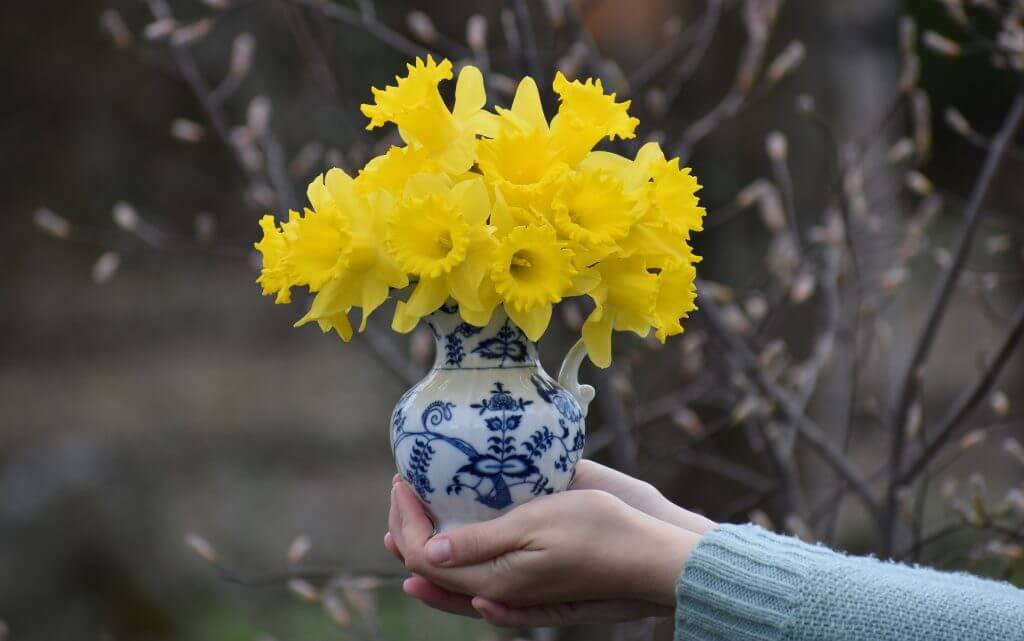
Tips for Harvesting Daffodils
Although daffodils can be picked any time they are in bloom, there are a few tricks to ensure a long and happy vase life. When the blooms first emerge, you’ll notice that the bud are held straight up, in line with the stem. If you harvest the flowers in this “pencil stage” they will never fully open. Instead, wait until the color is fully visible and the head is almost perpendicular to the stem. This is called the “goose neck” stage, and it’s the ideal time to pick single daffodils. Double daffodils should be harvested a bit later, when the flowers are half open.
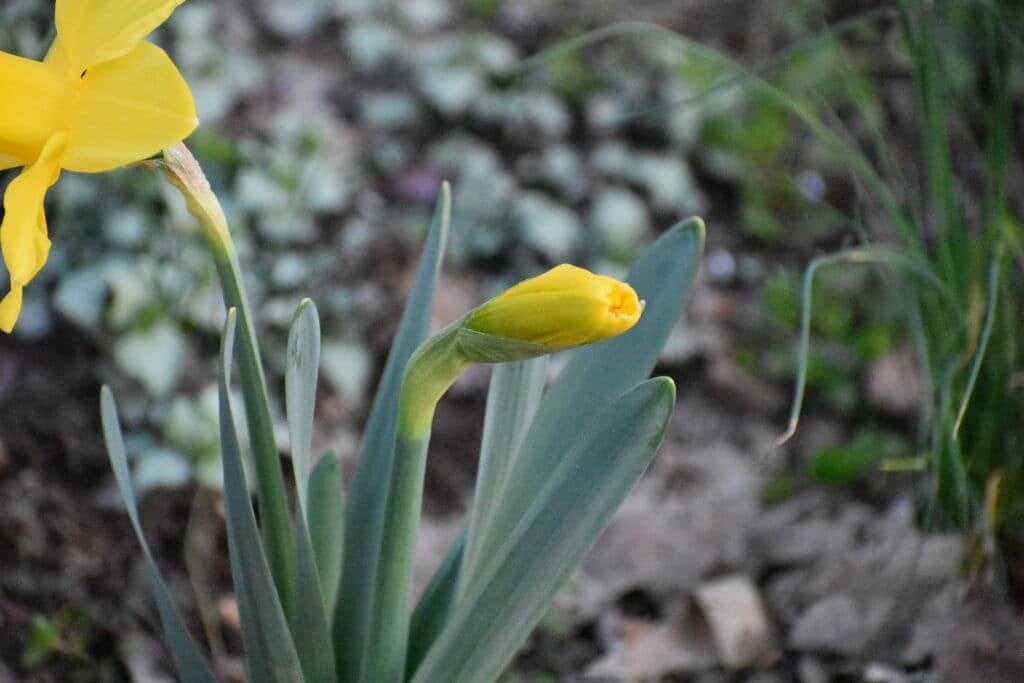
Some people can experience itching or a rash when working with narcissus, so exercise caution and wear gloves when harvesting. Use your hands rather than scissors or snips to harvest. Point your thumb down toward the earth, reach all the way to the base of the stem, and then pull up.
Using this technique ensures the longest stem length, and also means less sap is released from the stem. The sap that daffodils secrete is toxic to other flowers, so they should be conditioned separately before being used in mixed bouquets. Place freshly harvested daffodils into cool water and let them sit for three hours. During this time, the sap will run out from the stem.
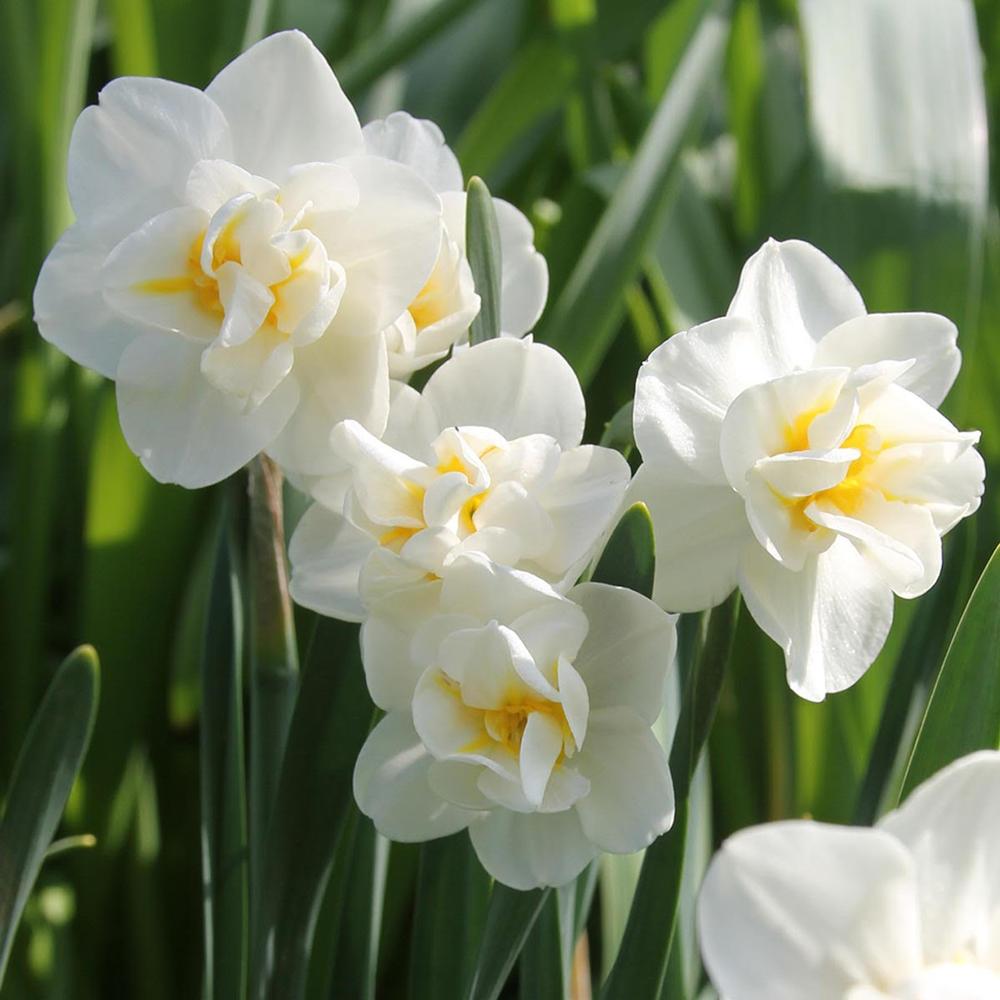
After conditioning, dump out the initial water, wash the vessel, and refresh with new water. Now, your daffodils can safely be paired with other blooms. Remember that each time you make a fresh cut the sap will flow again. So, if you're working on a free form design, cut the varying stem lengths required for your piece prior to conditioning.
Daffodils pair beautifully with ranunculus, hyacinths, hellebores, anemones, and early tulips. You can also take advantage of spring flowering branches such as forsythia, lilac, and quince. These woody cuts create a strong framework for spring designs. If mixed arrangements are not your style, simply gather a handful of daffodils and display them in a canning jar or heirloom vase.

Favorite Varieties for Cutting
Choosing favorite daffodil varieties for cutting is like choosing a favorite child. Each brings their own unique charm to an arrangement. Below are a few favorites that work particularly well in a vase.
Delnashaugh – These beautiful, late-blooming double daffodils have layers of large, pure white petals interspersed with ruffles of apricot-pink. They have sweetly scented flowers and long sturdy stems. Harvest double daffodils once the blossoms are at least halfway open. If picked too soon they will fail to open in the vase.
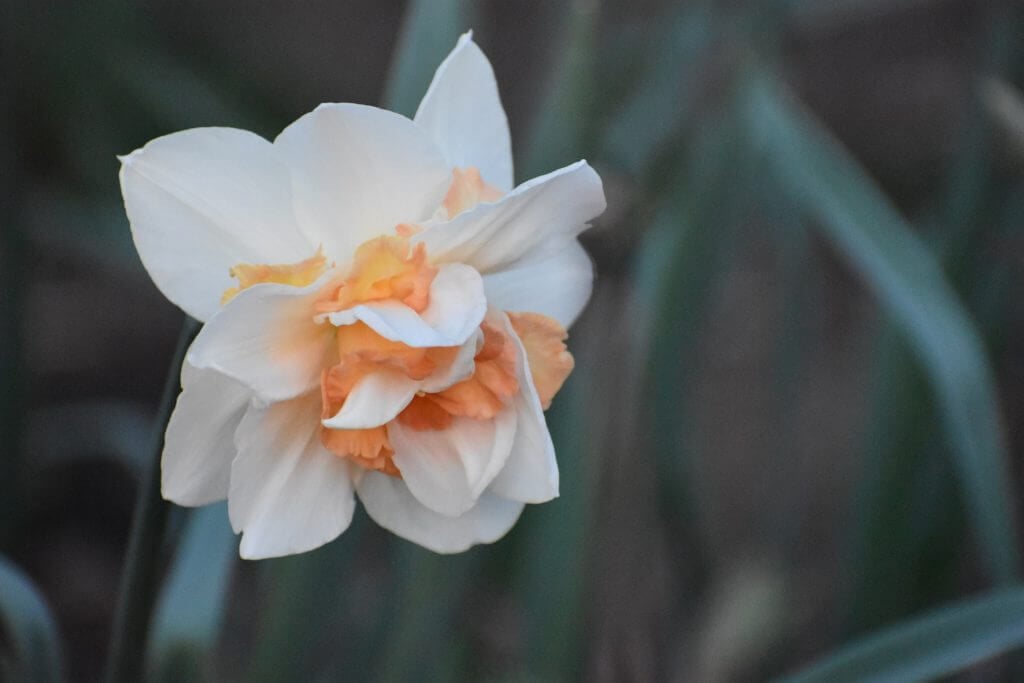
Yellow Cheerfulness – What a fabulous name for this buttery yellow beauty. Yellow Cheerfulness is an heirloom treasure with clusters of intensely fragrant, primrose yellow flowers. This color pairs beautifully with blue hyacinths and long-stemmed pansies. Lovely in the garden and beautiful in a vase.
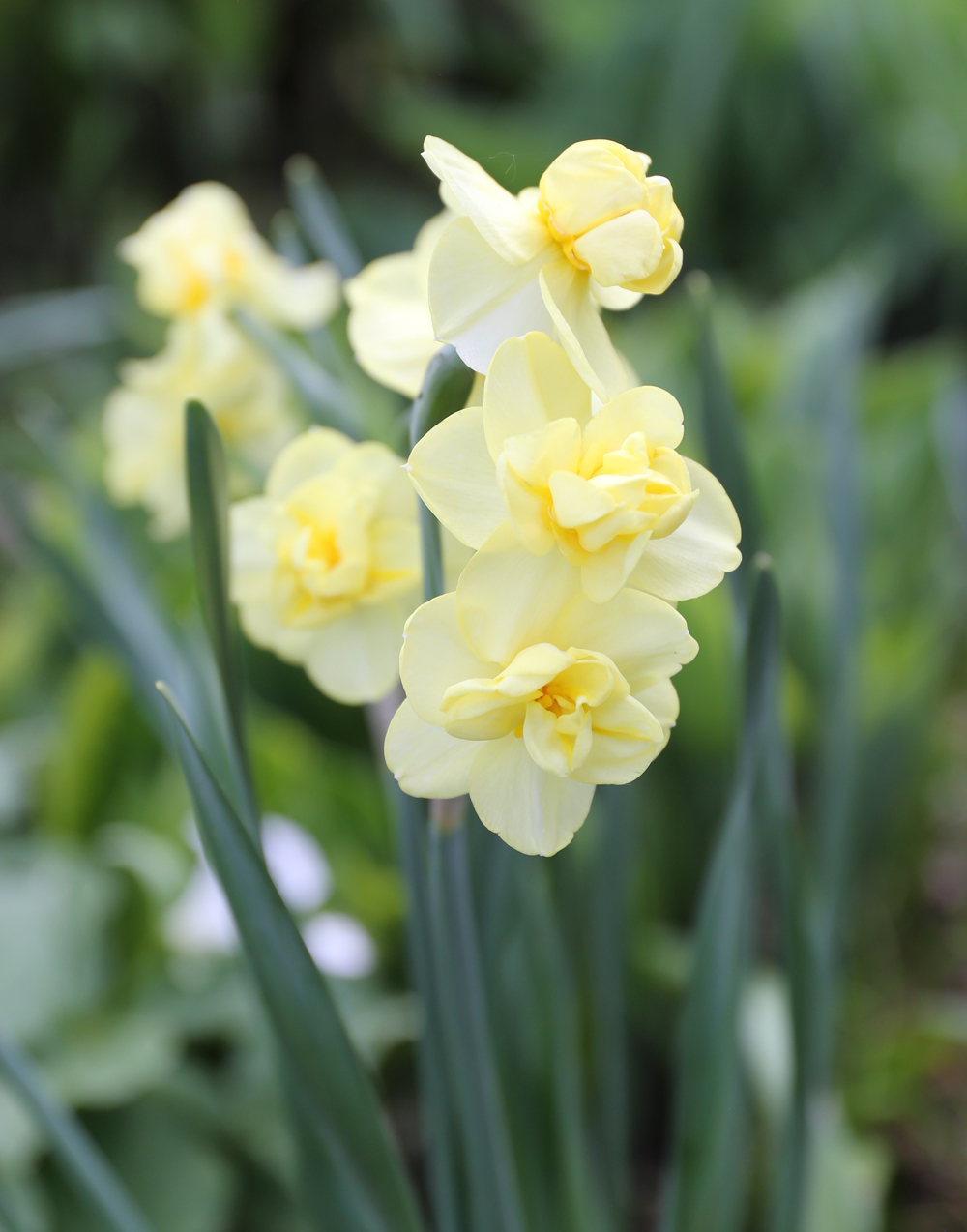
Love Call – This stunning, split corona daffodil is sure to sweep you off your feet. A skirt of ivory petals sets off Love Call's ruffled, bright orange cup. The blooms are unique enough to hold their own in a vase, but also work beautifully when combined with other daffodil varieties in a more elaborate compote design.
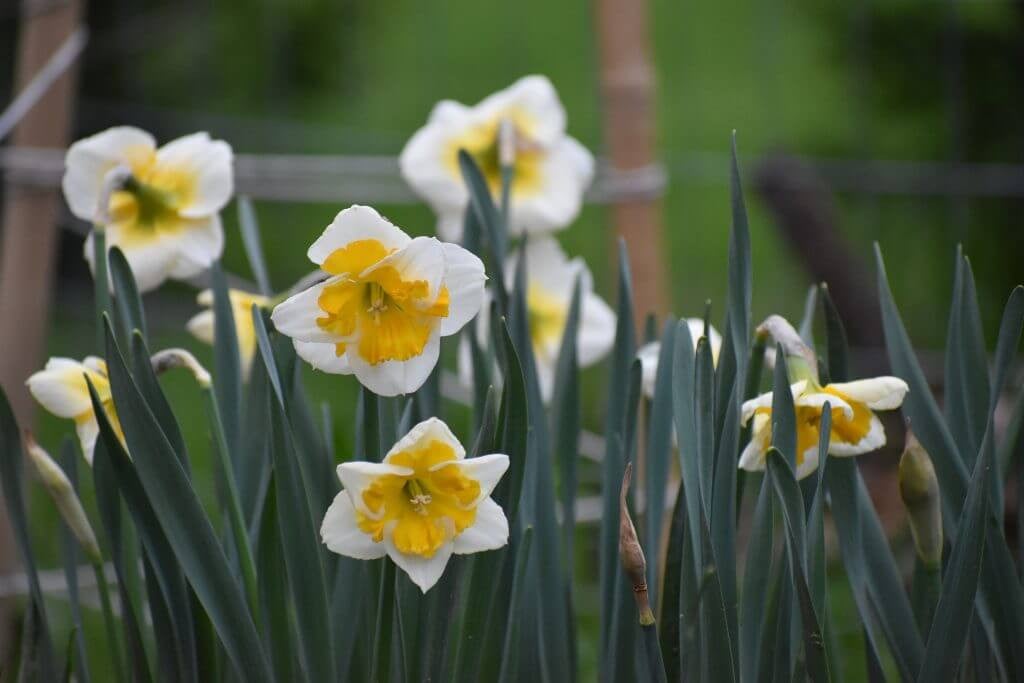
Pueblo – This white jonquilla daffodil should be on every cut flower daffodil list. It’s one of the longest lasting varieties, and the petals change color as the blossoms mature. The petite blooms open soft, primrose yellow before maturing to creamy white. Each sturdy, 12" tall stem is topped with a bouquet of one to three flowers.
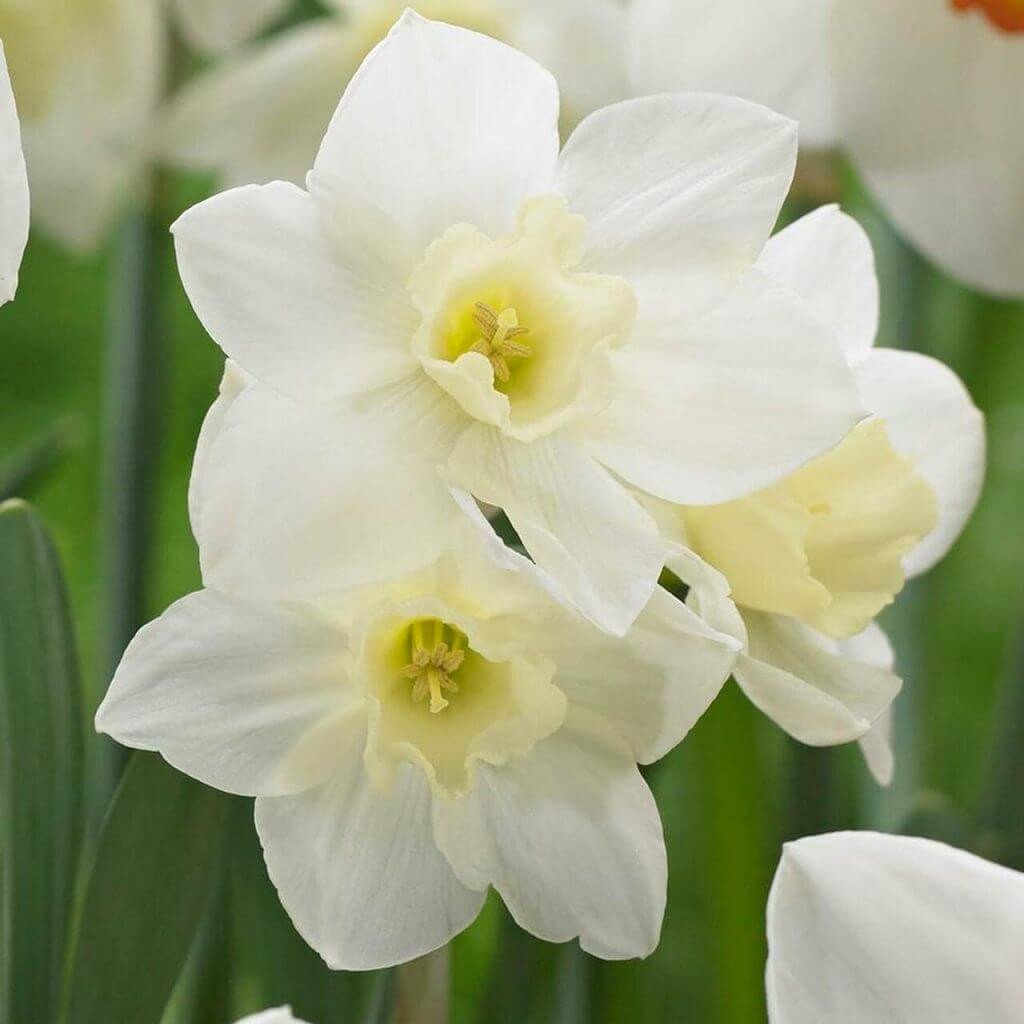
Dutch Master - Perhaps you're surprised to see such a common daffodil on the list. In fact, many floral designers and cut flower growers shy away from bright yellow daffodils in favor softer peaches, pastel pinks and ivories. But this tried and true variety is big, reliable and very early. Its triumphant arrival deserves to be celebrated.
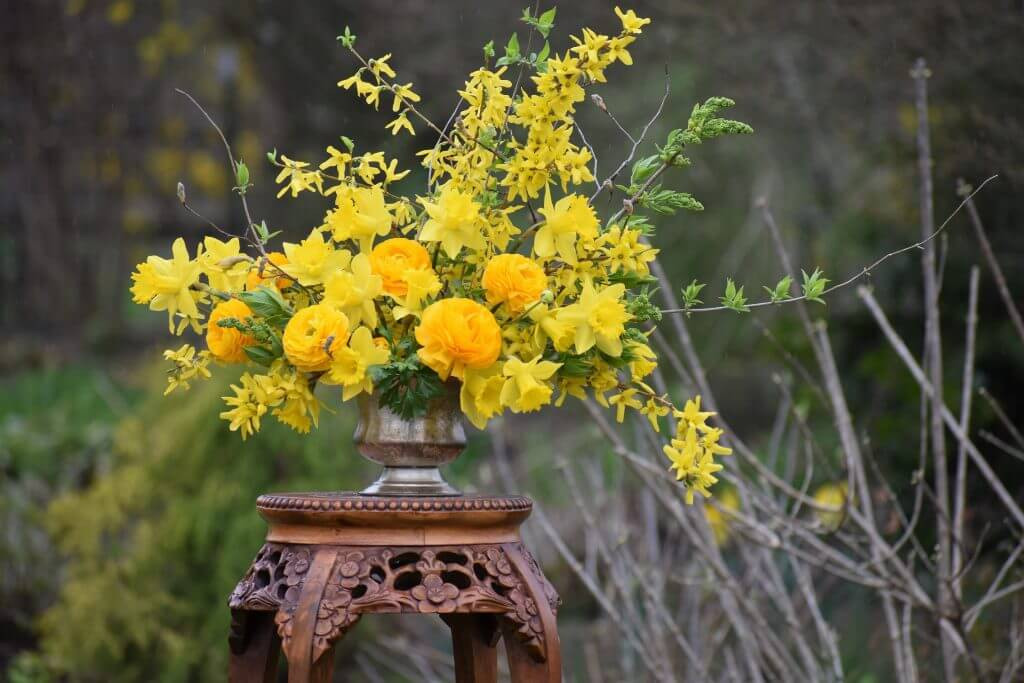
Learn More About Growing Daffodils
You'll find lots of information about daffodils our website, including: All About Daffodils, Planning Guide for Daffodils, Best Daffodils for Naturalizing, and Best Daffodils for the South. You can pre-order daffodils starting in April, for shipping at the proper planting time in fall. Shop our complete selection of daffodils HERE.
